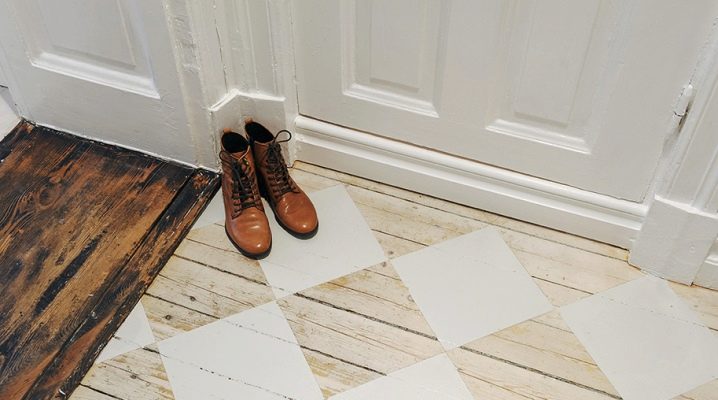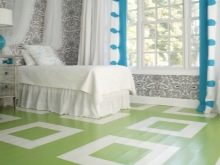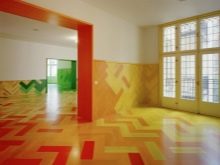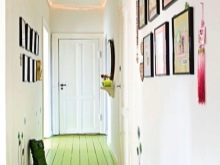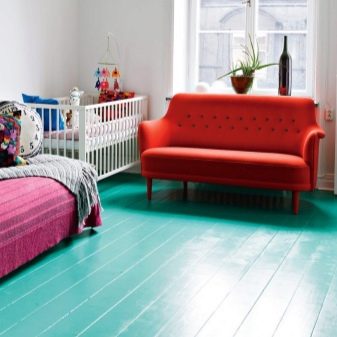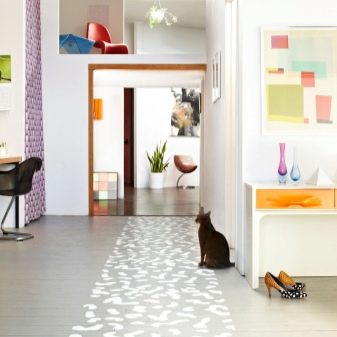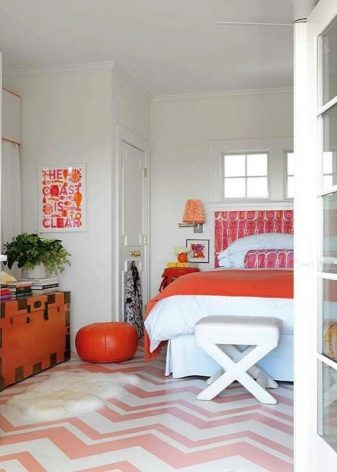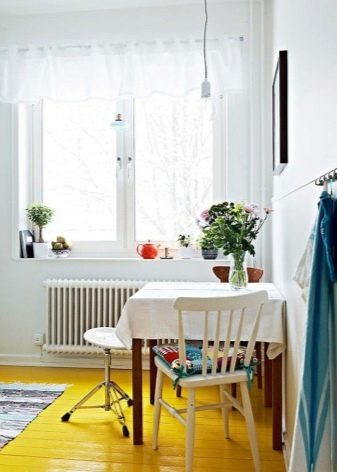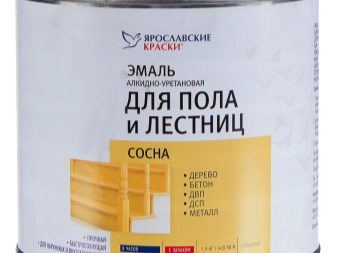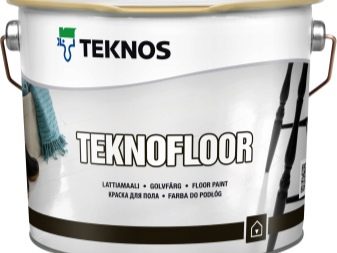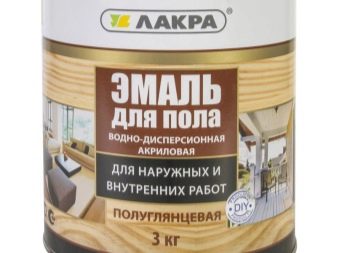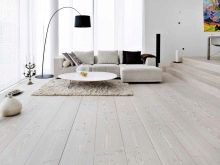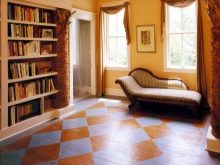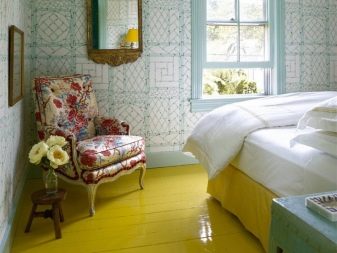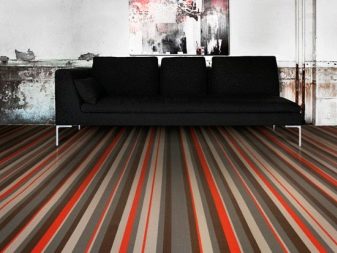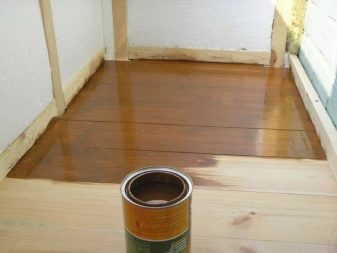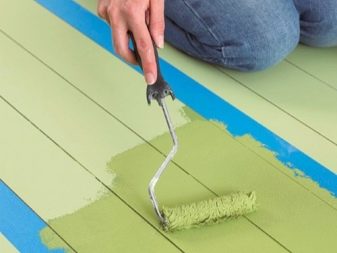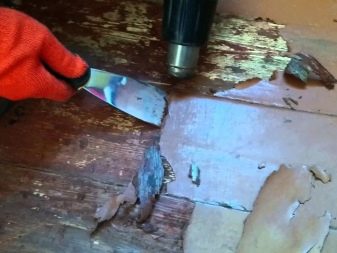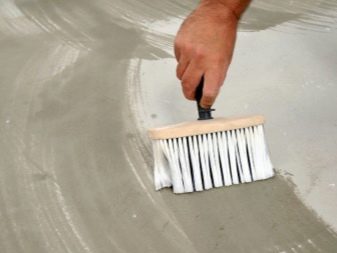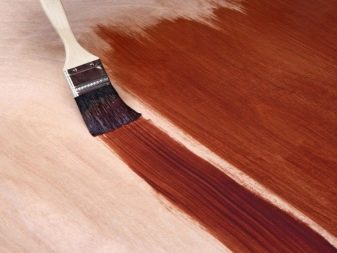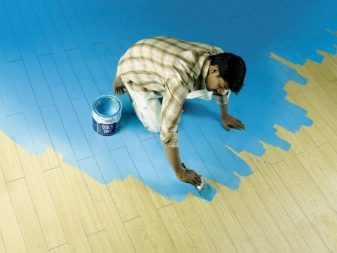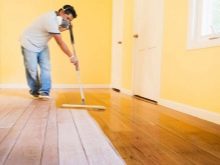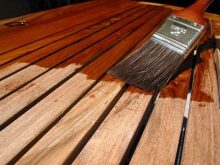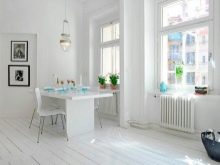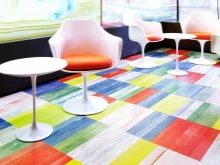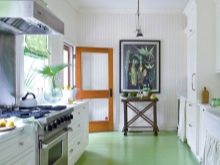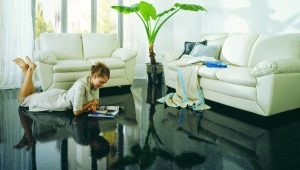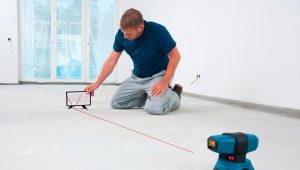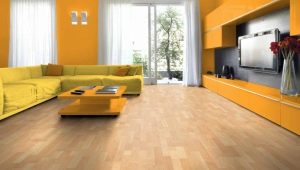Subtleties of the process of painting the floor
An important detail in the interior of any home is the floor covering. The floor in the house more than other elements affects the overall perception of the room, so its design is given no less importance than the arrangement of walls and ceilings. Recently the leading positions are occupied by floorings, which, as a rule, are decorated with paint. You can paint with your own hands at home, but before you start work, should examine all the details of the process.
Special features
Any types of repair work have their own characteristics, and painting the floor is no exception. Most often, as floor coverings choose wood flooring. Before you buy paint or varnish for the floor, you need to understand the origin of the existing flooring. The material used for its manufacture is important when choosing paint or varnish, as well as the means by which the preparatory work will be carried out.It is possible to paint the floor using acrylic, oil, wear-resistant and universal rubber paints.
It is necessary to take into account the peculiarities of the room where painting work is planned. The intensity of use, the effects of external factors, the average temperature and humidity are very important in the selection of paint, since the service life of the painted surface will depend on its properties. If the surface itself was previously painted, then it is necessary to determine the degree of compatibility of the used paint with the new agent.
If the goal is not to update, but to apply a new layer, then you need to either prime or treat the surface with a special compound before applying the decorative layer.
What to paint?
Today, there are different types of paint and varnish products that can be selected for both wooden flooring and concrete floor. There are two types of products that can be used to cover the floor: colorless and opaque. Clear varnishes are great for wooden surfaces. They are durable and resistant to fading, and also dry quickly. Decorative varnishes have a lot of tones, thanks to which a wooden surface can be given a beautiful shade without overlapping the tree structure.Beech, oak and other expensive floorings have a beautiful structural pattern, and the lacquer, which has a translucent or transparent texture, will perfectly emphasize it, give it shine and protect it from moisture.
It is worth remembering that the varnish is not resistant to various mechanical damage, and therefore it is better for them not to cover surfaces in rooms with high passability. Otherwise, it is worth applying additional impregnations.
You should not use this tool to cover the flooring of soft wood (spruce, pine). It is better to treat them with paint that maximally protects the surface from mechanical damage.
Which paint is better?
Depending on the chemical composition, paints of different colors are divided into acrylic, oil, wear-resistant and rubber:
- Non-toxic Acrylic Paintshaving a water base, perfectly paint over the surface of solid wood. They are characterized by sufficient strength (service life is about 10 years), and therefore are in high demand. Components present in the paint, not to be afraid of temperature changes and high humidity, which means that the paint itself is suitable for use in rooms with missing heating.When painting there is no sharp smell, and the surface with the applied paint dries quickly.
- Ecological and safe for the human body are based on water. rubber paints, appeared relatively recently, but already had time to gain popularity. They are characterized by high strength, superelasticity, water resistance and low consumption. The polymers included in the paint protect the wooden surface from burnout and temperature changes.
- Oil paints belong to inexpensive and extremely common materials for painting. They have a homogeneous consistency and are sufficiently resistant to temperature fluctuations. Having a high viscosity, ideal for painting OSB panels, consisting of glued wood chips. Water-based paints are not suitable for such panels, as there is a high probability of swelling and bending of the slab. Over time, cracks may form on the painted surface. In addition, the paint dries for a long time and has a very unpleasant smell.
- Unlike oil species, wear resistant paint different resistant.Surfaces with such paint are not afraid of peeling or fading. It is easy to apply a layer, and the paints dry quite quickly. Their smell is quite specific, it disappears from the room only after a few days.
Colors and decor
Gone are the days when only one color was used to paint the floor. Brown paint and several shades of it were produced especially for wooden flooring. Today, manufacturers produce a wide color palette, thanks to which you can choose absolutely any shade. Water-based paints are particularly distinguished by color. There are both ready-made options, and those that can give the desired shade, using a special tool-color scheme. White paint is the basis to which a certain amount of the desired color is added. In order to get the desired shade of paint, you can add a few colors.
Matte varnishes also have different colors and shades. With their help, you can give any wood flooring a shade of noble breed. Staining of the flooring can be done using a single color or shade, evenly distributing the tool over the entire surface.There are special devices, stencils, with which the surface of the old floor is transformed by drawing a picture. The technology is simple: a stencil with a cut-out pattern is applied to the floor surface, and paint is applied to the open areas.
As a tool, you can use either a sponge or a roller.
Technology works
Painting the floor, like any other job, has its own technology. The final result depends on a competent and consistent approach to this type of activity. Before you begin the process, you need to prepare tools that may be needed during the preparatory work, and for painting the floor:
- The main tool for covering the flooring is the roller. Today, manufacturers produce a wide variety of rollers in various sizes and materials: foam, polyacrylic, fur, polyamide, and even textured. Each species has its own purpose. For painting the floor the best option is a fur roller, marked VMP. They are made in accordance with GOST and are the most durable in comparison with the foam options, and even a layer of paint applied by them will lie flat.
- For uniform absorption of paint, it is better to purchase a special container with two-level planes. The tool is poured into one half, and the other is used for pushing the roller.
Surface preparation
Preparatory work is carried out on the basis of the surface condition of the coating. If the flooring is new, then you need to polish the surface well with a scraper, then remove dust and debris. If the coating is old, then to begin with, a layer of paint is removed using either a mechanical (using a building hair dryer) or chemical (solvent) cleaning method. The formed gaps are puttied, after drying the surface is leveled.
If the coating will be varnished, then the need for a primer is eliminated. Such floorings are treated with special impregnations that protect the wood from mold, fungi and accidental ignition. To prepare the floor for painting use linseed oil or a special primer, giving the flooring antiseptic properties and preparing the surface.
A smooth and even floor with good adhesion will greatly facilitate the adhesion of paint to the flooring.
How to paint?
After preparation, you can begin to paint the floor in the apartment. There is a certain sequence of this stage of work. Before dyeing, thorough mixing of the composition in a can is required to remove clots, and this procedure is carried out regardless of the color (black, white, color) of the paint. Then you can begin to paint the surface adjacent to the walls, starting from the opposite side of the entrance. It is more convenient to make it with a small brush, as it is impossible to paint over every corner with a roller.
After applying a layer around the perimeter, you can start painting the central part of the floor. The applied layer of paint should be completely dry, and only after that you can begin to install the baseboards. In order not to stain wallpaper or other facing materials on the walls, it is necessary to close the part adjacent to the baseboards with masking tape or other improvised means. Next, you can proceed to staining skirting with a narrow brush. After the first layer has dried, a second layer is applied on the baseboard. After waiting for the allotted time to dry on the baseboards,You can start applying paint on the central part of the surface.
When the painted surface is completely dry, you need to prepare the floor for use, thoroughly washing out.
Professional Tips
There are a few professional tips to get the best results:
- The application of any decorative coating requires a clean surface, so the base must not only be cleaned, but also dried after washing. Pre-treatment of the surface is required for the floor of any material (concrete, tile, wood, plywood).
- When preparing the surface of a concrete floor, quartz sand should be added to the primer. It will make the floor less slippery. In addition, to increase the strength of the cement surface and get rid of dust, you can use a special impregnation-topping.
- When preparing wooden flooring for varnishing, it is better to treat the surface with an oil or wax compound. This treatment will help protect the surface under intense loads.
- For plywood flooring, it is better to pre-treat with an acrylic primer, which protects this material well against moisture and mold.
- The readiness of the surface after priming can be checked by placing a palm on the floor. If the composition does not stick to the hand, then you can start painting.
Learn more about how to paint the floor, you will learn from the following video.
